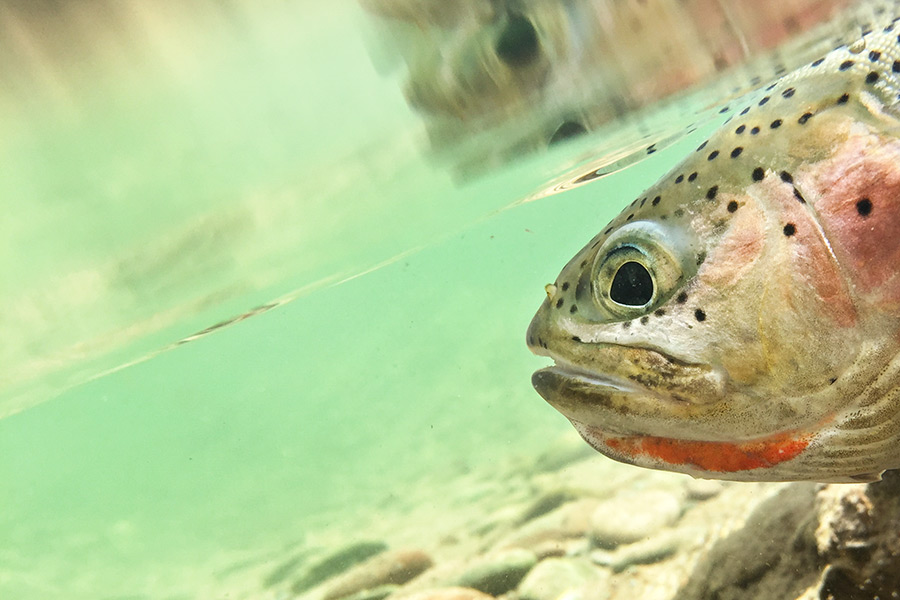In an effort to reduce handling stress and hook-related injuries to native trout species, Montana Fish, Wildlife and Parks officials are considering banning “terminal tackle” — treble hooks and double hooks — on the three forks of the Flathead River.
With an eye toward adopting the proposed changes to its 2020 fishing regulations, FWP will host open houses across the state, including Northwest Montana, to share information and gather public comment.
FWP Region 1 staff will be on hand at the following open houses in Region 1:
Aug. 20: Thompson Falls, FWP Office, 5427 Montana Highway 200, 4-7 p.m.
Aug. 21: Kalispell, FWP Region 1 Headquarters, 490 N. Meridian, 6:30-8:30 p.m.
Aug. 22: Libby, Ponderosa Room, City Hall, 952 E. Spruce St., 4-6 p.m.
Additional open houses are scheduled across the state and more info can be found online at http://fwp.mt.gov/news/newsReleases/.
On Aug. 15, the Montana Fish and Wildlife Commission reviewed the tentative fishing regulations before the formal public comment period commenced on Aug. 19. The public comment period will end Sept. 15. The final regulations will be considered at the October commission meeting.
In Region 1, the proposed changes include restricting terminal tackle to a single hook on the Flathead River upstream of Teakettle Fishing Access Site (U.S. Highway 2 bridge), including Middle, North, and South Forks and all tributaries; and changing the largemouth and smallmouth bass limits on some waterbodies in the Western Fishing District.
“FWP biologists are proposing the terminal tackle regulation in an effort to reduce handling stress and hook-related injury to westslope cutthroat trout and bull trout amid increased use and pressure,” according to the FWP announcement. “This change would prohibit treble and double hooks on those stretches of river.”
In general, angling pressure has been increasing on all three forks of the Flathead River for the last decade. Population estimates for westslope cutthroat trout in the three forks are relatively low (approximately 300-500 fish per mile), according to recent FWP research.
Population densities for larger cutthroat trout (12 inches and greater) are even lower (typically 30-80 fish per mile).
While population numbers remain stable, approximately 45 percent of fish greater than 12 inches show signs of repeat catch, which indicates fish are being caught and released numerous times.
The combination of low-density fish populations with high levels of fishing pressure could lead to problems for the sensitive fish species, and the proposed regulation would be a proactive protective measure.
Bull trout, a native fish species listed as threatened under the Endangered Species Act, use all three forks as migratory corridors. Angling for bull trout is not allowed in the Middle and North forks but anglers can catch-and-release in the South Fork, and harvest two bull trout per season with a registered catch card.
Angler surveys and catch cards indicate increased pressure on bull trout.
FWP biologists conducted a survey of anglers in the upper Flathead River between Blankenship Bridge and Teakettle Fishing Access Sites from March 2015 through February 2016. During peak season (June through August), the majority of anglers (57 percent) used fly-fishing gear while 43 percent used other gear, including artificial lures and bait.
Fishing regulations undergo a thorough review every four years.
Last spring, FWP conducted an online survey that contained ideas and proposals that the department was considering for regulation changes. FWP staff also met with angling and recreational groups across the state to discuss fishing regulations. That input was used to craft the tentative fishing regulations proposed to the commission. Many of the regulations that were considered last spring were modified for the tentative regulation proposals based on public remarks from the online survey and meetings.
The department is asking for public comment on the tentative fishing regulations. Input can be submitted via email at [email protected] or via mail to Fishing Regulations, P.O. Box 200701, Helena, MT 59620; or through a survey link, which will be available on the FWP website Monday, Aug. 19.
FWP will accept public comment through Sept. 15, and the online survey will also be active through Sept. 15.
